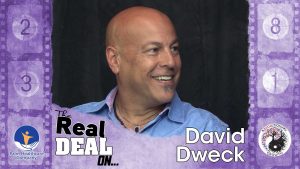by Sher Delva | Aug 4, 2017 | Addiction, Celebrity, Drug Abuse, Mental Health, Stigma, Therapy

Any James Franco Fans Out There?
James Franco recently opened up about what he calls his “addictive personality.” It turns out the actor/director has struggled with workaholism and mental health his entire life.
Franco is known for his eclectic resume, starring in films such as Milk, Spiderman, Spring Breakers and City by the Sea. He has appeared in television shows like Freaks and Geeks and General Hospital.
The interview, with Out magazine, was to promote his upcoming HBO series, The Deuce. Franco chatted with novelist Edmund White about some of the challenges he faced, and how he managed to overcome them.
Teenage Angst
Franco’s troubles start way back in his teen years. During this period, he was arrested for underage drinking, graffiti, and shoplifting, among other things. Reflecting on that time, Franco told the Guardian, “It was teen angst. I was uncomfortable in my own skin. I was shy.”
Franco found acting as a way to cope and passionately immersed himself in it. He found acting to be an excellent outlet for his personality type. However, soon acting “became everything” to the point where he did not even socialize.
After doing nothing but working, Franco says he realized he was depressed, isolated and lonely.
“I really threw myself into it, and that became everything, to the point where I didn’t even socialize. And then after, like, 10 years of that, at age 27, I realized, ‘Man, I’m so depressed. On the surface my life seems pretty good—I have a career and everything—but I feel isolated and lonely,’” he admits
To combat these feelings, he decided to switch gears and go to school at Brooklyn College. However, just like with acting, academics became the focus of all his attention, and he was obsessive with that as well.
“I threw myself into school, but again it was just this sort of running, running, running,” he says.
Franco told Out that it has been difficult to overcome his workaholism. One of the ways Franco has found helps is through participating in activities like surfing and taking classes at the International Dance Academy on Hollywood Boulevard.
He says these activities are part of his “therapy,” to help him overcome his work addiction.
“It’s a kind of therapy for me,” he said. “I’ve started a new chapter of my life. I was very work-addicted and addicted to other things—not substances, I got over that a long time ago—but I’ve recently changed my life, and this is part of my therapy.”
—
What is a Workaholic?
The concept of workaholism or workaholic behavior is very misunderstood. Often, people see these behaviors as positive qualities. You might even hear people joke about how they are a workaholic as a way of describing their passion for their job and solid work ethic.
The truth is workaholism is a real condition that can severely impact a person’s life. People addicted to work sacrifice their social life, families, and personal connections due to their obsessive desire to work.
But what’s the difference between a hard worker and a workaholic?
This is a very common question. A hard worker is someone who works very hard while at work and completes all of their tasks, yet still manages to find a healthy balance between work and personal responsibility. Of course, the occasional burst of overworking may occur to meet important deadlines however, this is not the norm.
Workaholics, on the other hand, are unable to make this differentiation. They view work as a source of adrenaline. They feel they must work harder than everyone else and put in more hours in order to succeed.
Workaholics achieve one goal and immediately set more ambitious ones. Staying at the same level of accomplishment is a failure and results in incredible distress. Workaholics sacrifice their health, family, and personal life in order to work.
Overall, workaholism is something rarely addressed, but like Franco, people who struggle with workaholism often need professional help. If you are struggling with workaholism, mental illness, or substance abuse, please reach out. You are not alone. Call now.
CALL NOW 1-888-922-5398
by Sher Delva | Aug 1, 2017 | Celebrity, Mental Health, Recovery, Stigma, Therapy

At the age of 18, David Dweck decided he was going to bypass college and get a job working at a recording studio. When everyone heard about his decision, they all told him it would never happen.
Instead of giving up, Dweck responded with “Watch me.”
Soon enough, Dweck was working at a recording studio over the summer in New York City.
—
That same tenacity followed Dweck over the course of his career in both the music industry and in real estate. These days, Dweck is a real estate renegade, who leads Florida’s number one real estate club, Boca Real Estate Investment Club (BRIC).
Recently, David Dweck appeared on The Real Deal On… with Dug McGuirk where they discussed the topic of reinvention. Dweck says reinvention has been a major theme in his life both personally and professionally.
Originally, Dweck desired to work in a recording studio as an audio engineer. He was willing to do whatever it took to achieve that goal, even work for free.
Fortunately, his determination paid off. Three stations offered Dweck a job, and he ended up working for a company called Media Sounds.
“I knocked on doors, and I said, ‘I’m hungry, and I’m willing to work for no money, I’m willing to sweep floors,’ and Media Sounds said, ‘Nope, we’ll pay you and we’ll hire you as the night time receptionist,’” he remembers.
Media Sounds was a radio station based out of New York City. Dweck worked the night shift as a receptionist from 4 pm to midnight. Working in the evenings was an exciting time, Dweck says. On one occasion, he even met Mick Jagger.
“A lot of good stuff happens to you at night,” he says. “I walk in for my 4:00 shift and I remember Lisa, the woman I replaced, she got off at four. She goes, ‘You won’t believe who’s downstairs in Studio B!’”
Dweck says it was a “surreal” experience and when he looks back at his time in the music industry, he does not have any regrets.
“I got a taste of it, and that was gratifying,” he says. “No regrets. I sit here today happy with the time I had there.”
Dweck’s Career Revolution
Despite his success, Dweck began to realize how fleeting the career of an audio engineer really was. As a result, he decided to go to college and earn his degree in Communications at the University of Miami. He then spent close to five years working in radio and production sales.
While he was passionate about his career in communications, he eventually decided to pursue a different path. His decision was based on the major shifts he continued to see occurring in the radio industry.
For example, Dweck’s bosses at Media Sound were two very successful, educated men. They put a classified ad in The New York Times that said “Young men with unlimited capital willing to finance legitimate business venture.”
“What was that venture? They financed Woodstock. Those were my bosses. They sold the studio,” he says.
“That’s when the light bulb went out,” he says. “If they’re getting out, that’s a sign.”
Ultimately, Dweck “saw the writing on the wall” and decided to move toward a career in real estate.
“I realized that real estate would be the long term path to benefit my family and to create a life style,” Dweck says.
Still, pursuing real estate did not come without its own set of challenges.
“At the time, I was starting a family, and it was a very big risk to take, and I embraced that,” he says.
Despite the risks, Dweck started his career as a real estate investor. He acquired his real estate license in 1993. He was determined to succeed despite the voices that told him there was no money in real estate and that it was too much hassle to bother with.
“I strategized both short-term and long-term realizing this will be my retirement, so for every house that I bought, built and sold, I also would take that money, reinvest it into a rental property and get bank financing,” he says.
Dweck had to learn the ropes in real estate, so he started studying and learning from mentors. His mentors taught him how to deal in reality and not in theory. This inspired him to create the Boca Real Estate Investment Club.
“That’s one of the reasons why I started the Boca Real Estate Investment Club because there’s really not a how-to manual for investors back in the day, especially down here in South Florida. It’s kind of like the wild, wild west.”
More Challenges: Overcoming the Recession
In 2007, Dweck was faced with another major challenge: the declining economy. Along with the decline in the real estate market, Dweck’s marriage was declining as well.
“When your business is suffering, you want that life time partner, not only behind you but beside you, and I did not have that,” he says.
“That really hurt, so I had to dig in deep because, in 2008, it was on, and I was coming into the office every day and doing damage control, watching the relationships I’ve built and watching people suffer.”
Dweck remembers seeing one of his friends, who was worth 60 million dollars at the time, lose it all.
“I’m thinking ‘Wow, the sky is falling.’ I’m like mystified,” he says.
Fortunately, Dweck was relatively conservative with the risks he took. Still, he began to question whether or not he should give up on his career in real estate.
“I said, ‘Do I hang up, do I just call it a day and reinvent?’”
“The answer, I answered myself, and that answer was a resounding no, I’m not going to do that. I’m going to dig in so deep that whatever it takes, I’m gonna find solutions,” he says
Overall, the experience taught him who his real friends were and how resilient he was.
“You never forget these challenges and how you are able to rise to the challenge,” he continues.
Ultimately, Dweck’s resilience and courage helped him navigate all the obstacles thrown his way. He defines courage as having “balls” and feels this applies to both men and women.
“I think you really have to have a lot of self-belief and have the courage to not just try, but really go for it,” he says.
Reinvention is about having the courage and “balls” to persevere despite life’s challenges. Dweck’s journey defines reinvention. Please check out the full interview for more insights into Dweck’s career in real estate, and hear the crucial advice he gives to those struggling in their own journey.
If you feel like giving up, remember it is never too late to make a transformation. Please reach out if you are struggling. We are here to help. You do not have to do this alone. Call now.
CALL NOW 1-888-922-5398
by Sher Delva | Aug 1, 2017 | Addiction, Addiction Stigma, Drug Abuse, Mental Health, Recovery, Stigma, Withdrawal

Just last week, a train hit a couple who were hugging and laying on the tracks in an apparent suicide pact. The crash occurred on South Florida’s Tri-Rail and the train driver says he did everything he could to stop the train but was unsuccessful. Shockingly, the couple survived the crash and both are in critical condition at the Delray Medical Center.
Suicide by train is not anything new. In fact, the act has been depicted many times in movies and television shows. In the United Kingdom, suicide-by-train accounts for 3.5% of all suicides. A 2012 exposé revealed stories from train drivers who had killed people while operating a train. For some, the trauma from the experience lasts a lifetime.
Surviving a train crash is rare. It is difficult for trains to stop quickly enough to prevent crashes from happening. Still, Tri-Rail is fighting back, doing everything possible to prevent these fatalities. Palm Beach County, specifically, is the site of most cases of suicide-by-train. At least five people have been struck this year, four of them by Tri-Rail.
The crash is a reminder to Tri-Rail about the importance of suicide awareness and education, Tri-Rail spokeswoman Bonnie Arnold said.
“Unfortunately, suicide by train is a pretty sure thing. If someone wants to commit suicide, it’s pretty hard to prevent it.”
In response, Tri-Rail plans to put up crisis-intervention signs in vulnerable areas. They hope the signs will help people think twice about taking their own lives. The sign will also warn crews of the six problem spots along its 72 miles of track, which run from Miami-Dade to Palm Beach Counties.
Another Solution? Drones.
Tri-rail is also considering drones as a way of monitoring the tracks and deterring suicides. The drones would help alert train drivers of potential accidents further in advance. The drones would spot people on the tracks early enough to warn the drivers of potential issues.
Furthermore, The Florida Department of Transportation plans to launch a public-service campaign on radio, TV, and websites urging people to stay away from the tracks.
Florida’s New Brightline Trains Sees First Suicide
The newly constructed Brightline train has not even been open yet, and already has experienced their first suicide. The train is supposed to offer Floridians a much faster and relaxing way of commuting.
The website boasts:
- Go from Fort Lauderdale to Miami in 30 minutes
- Go from West Palm Beach to Miami in 60 minutes
- Work or play while you travel, care free and car free.
However, with the speed and convenience comes a high potential for suicide attempts. The trains are still in the testing phase and already an 18-year old woman was struck and killed when a train was going southbound on Monday afternoon.
“Our thoughts and prayers are with those affected,” the company said in a statement. “We are cooperating with the local authorities as they complete their investigation.”
In preparation for the start of service, the company has been working to promote train safety through workshops and warning students about the dangers of walking along the tracks.
Overall, these recent suicides are a serious indicator of problems to come as more trains develop all across South Florida counties. As for the couple mentioned, we will have to see if they are able to make a full recovery.
On average, there are 121 suicides every day in the United States. Mental illness is a serious problem and it is important to raise awareness. If you are struggling with thoughts of hopelessness and suicide ideations, know you are not alone. There Is help out there. Do not wait. Call now.
CALL NOW 1-888-922-5398
by Sher Delva | Jul 28, 2017 | Addiction, Drug Abuse, Stigma, Therapy, Withdrawal

(This content is being used for illustrative purposes only; any person depicted in the content is a model)
Oh e-cigarettes, just when we thought we had stopped talking about them, here we go again.
The debate on whether e-cigarettes are safe continues. This time, New York Governor Cuomo is chiming in by announcing a new measure aimed at fighting teen smoking.
This week, New York Governor Andrew Cuomo officially announced that the state is banning all electronic cigarette use in public and private schools. The decision comes as vaping among young people is on the rise.
When e-cigs were first introduced, many marketing efforts were focused on promoting e-cigs as a healthier alternative to cigarettes. However, these marketing tactics had an eerily similar vibe to the way cigarettes were marketed in their earlier years. We all know how that turned out. Back then, many people believed cigarettes helped reduce body weight and curb cravings. Even doctors smoked cigarettes in their offices, and smoking occurred on airplanes and indoors.
Clearly, a lot has changed since then.
We now know there is a host of medical complications that are the result of cigarette smoking. These include heart disease, lung cancer, and COPD.
Now, the same scrutiny is occurring at a much faster rate since health experts and the general public noticed the same pattern was occurring. In fact, a study done a while back found that the artificial flavoring in e-cigarettes could be linked to popcorn lung, a respiratory condition. This unfortunate condition is the result of inhaling the artificial flavors in e-cigarettes. The condition was named after a similar incident that occurred in popcorn factory workers who were constantly inhaling the artificial popcorn flavoring.
Moving forward, a statement released by the governor’s office states:
“Nicotine use in any form has shown to be damaging to teens, and this measure will close a dangerous loophole that allows e-cigarettes to be used in New York schools. This measure will further this administration’s efforts to combat teen smoking in all its forms and help create a stronger, healthier New York for all.”
Last December, the US Surgeon General declared the teen use of e-cigarettes “a major public health concern” nothing that between 2011 and 2015, use of e-cigs among teens has increased 900%! According to the National Institute on Drug Abuse, boys are twice as likely to smoke e-cigarettes as girls are.
At a December 2016 press conference, then-Surgeon General Dr. Vivek H. Murthy said:
“Adolescent brains are particularly sensitive to nicotine’s effects,” noting that it can cause “a constellation of nicotine-induced neural and behavioral alterations.”
Research has revealed that e-cigarettes are far from safe. All of them emit harmful chemicals like formaldehyde and acetaldehyde. Not only that, but the chemicals inhaled by e-cigarettes can cause asthma, cancer, stroke and heart disease. This is one of the reasons why many restaurants and public places have barred the use of e-cigarettes indoors.
Young people that vape are increasingly susceptible due to still developing. However, the marketing for e-cigs tends to attract teenagers. A study from the University of Hawaii in Honolulu showed that among non-smokers, there is a higher chance that teens who try e-cigarettes will eventually use cigarettes as well.
“E-cigarettes had a risk-promoting effect for onset of smoking,” said researchers.
With this new law in place, the city of New York will have more stringent policies on teen vape use. Just like cigarettes, e-cigs were marketed as healthier alternatives to smoking. It turns out; there is not enough evidence to confirm that e-cigs are in any way better than cigarettes.
Furthermore, there is still a danger even if it does end up being less than cigarettes. Your best bet is to not smoke. However, if you are struggling with addiction and need some support, give us a call. We want to help.
CALL NOW 1-888-922-5398
by Sher Delva | Jul 27, 2017 | Addiction, Addiction Medicine, Addiction Stigma, Stigma, Therapy, Withdrawal

(This content is being used for illustrative purposes only; any person depicted in the content is a model)
Barbara Harris believes drug addicts should not have children, and she’s using cash incentives to ensure they never do.
For the last 20 years, Harris has driven across the country in a branded RV advertising her non-profit to drug addicts and alcoholics.
Her mission? To reduce the number of children born addicted to drugs and alcohol.
Her nonprofit, Project Prevention, pays substance abusers up to $300 to get sterilized or put on long term birth control like an implant or IUD. Those who get sterilized receive a lump sum and those who opt for less permanent birth control options get their payments in smaller installments.
To date, Harris’s organization has paid more than 7,000 people, mostly women, to give up their fertility. Project Prevention only pays the addicts and leaves the sterilizations and birth control procedures to doctors.
Harris believes the cash incentive is stopping a major societal problem in its tracks:
“We’re preventing women who are strung out on drugs and alcohol from conceiving a child,” Harris says. “Nobody has a right to force-feed any child drugs and then deliver a child that may die or may have lifelong illnesses.”
Drug and alcohol use during pregnancy can result in a host of medical complications. The use of heroin and narcotic painkillers like OxyContin, Vicodin, or morphine can cause bleeding within the brain (intracranial hemorrhage) and even infant death.
Neonatal Abstinence Syndrome (NAS) is defined as: “a group of problems that occur in a newborn who was exposed to addictive illegal or prescription drugs while in the mother’s womb,” according to Medscape.
- Every 25 minutes, a baby is born suffering from extreme withdrawal symptoms from the heroin, painkillers, or cocaine their mothers continued using throughout pregnancy.
- The numbers of babies born addicted to drugs have quadrupled between 2004 and 2013.
- In 2013, 27 babies out of every 1000 were born dependent on narcotics.
- These babies suffer from withdrawal symptoms like irritability, convulsions, sleep abnormalities and joint stiffness.
- Often, these babies must be sent to intensive care units where doctors help wean them off the drugs.
- It is taking longer to wean addicted babies off drugs such as heroin and mephedrone. On average, babies now spend their first 19 days – up from 13 days – in the Neonatal Intensive Care Unit.
- In 2015, the average overall cost of a newborn suffering from NAS was found to be between $159,000 and $238,000, and these numbers are expected to continue to rise.
In terms of alcohol consumption during pregnancy, fetal alcohol syndrome is another tragic outcome. Fetal alcohol syndrome can seriously harm the development of a baby during pregnancy, both mentally and physically. These effects can last throughout a child’s life.
FAS harms a baby in many ways including:
- Birth defects
- Vision or hearing problems
- Low birth weight
- Learning disabilities
- Speech and language delays
- Behavioral problems
- Growth deficiency
- Death
Some say Harris’s Organization Raises SERIOUS Ethical Questions
Harris’s mission to reduce these pregnancies seems straightforward. However, many feel her organization raises serious ethical questions. One question posed is whether she is taking advantage of addicts during their most vulnerable time.
A major critic of Project Prevention is Lynn Paltrow, Executive Director of National Advocates for Pregnant Women. She’s been a critic of Harris’s work for over 20 years.
“Barbara Harris greatest impact is in perpetuating really destructive and cruel myths about pregnant women and their children,” Paltrow says.
Paltrow believes Harris’s organization does more harm than good and does not address the underlying problems of poverty, lack of access to healthcare and stress created by racism have on these women. Instead, she feels Harris’s organization does nothing more but promote stigma.
“When you talk to the medical researchers, the great news is that none of the criminalized drugs cause unique permanent terrible damage,” Paltrow says. “Three percent of all women give birth to babies that have what are called serious birth defects. None of that has anything to do with the criminalized drugs.”
Another strong critic featured is Mary Barr, a former addict who believes what Harris is doing is wrong. Barr has two children who were born healthy despite her drug use.
“I have two children who are incredibly healthy, were born healthy, they’re 26 and 25, and they’re very amazingly successful,” she says.
When asked if she would have taken up on Harris’s offer at the height of her addiction, she says she would have.
“I would have taken it because $300 all at once, that means for me, three nights of sleeping indoors,” she says referring to her predicament back then.
Is Project Prevention Denying Addicts a Second Chance?
Despite the controversy, Harris believes what her organization is doing is the right thing for the children. She does not believe she is promoting sterilization. Instead, she says what she offers is a choice.
“We don’t promote sterilization, that’s their choice. They got strung out; they decided they wanted $300 to sterilize themselves, and if it’s a decision they regret, it was a decision they made just like prostituting and ending up with AIDS,” she says.
One of the reasons Harris is so passionate about this is because she adopted and raised four children from the same mother who used drugs throughout her pregnancy. She wants to prevent other children from being born in the same situation.
“I watched how my children suffered and had to withdraw from drugs when they were born so no, I wasn’t thinking about ‘These poor women,’ I was thinking ‘My poor children,’” she says.
“I always say to them if you believe that strongly that these women should keep conceiving children then you should step up and adopt the next one born, but most of the people who have a problem with what we’re doing would never consider adopting one of these children, so if you’re not part of the solution, you’re part of the problem,” she concludes
Overall, like most harm reduction programs, this solution is controversial. There are many addicts who have recovered and gone on to have and raise children. Sadly, there are children born every day addicted to drugs and alcohol, and the consequences are real. Harris’s organization receives over $500,000 in funding every year. Clearly, there are many on her side when it comes to providing this option.
What are your thoughts? Does a program like this promote stigma or offer a solution? Either way, please do not continue to let your addiction take over your life. You deserve the opportunity to live a healthy and satisfying life. If you or someone you love is struggling with substance abuse or mental illness, please call now 1-800-777-9588.
CALL NOW 1-888-922-5398






